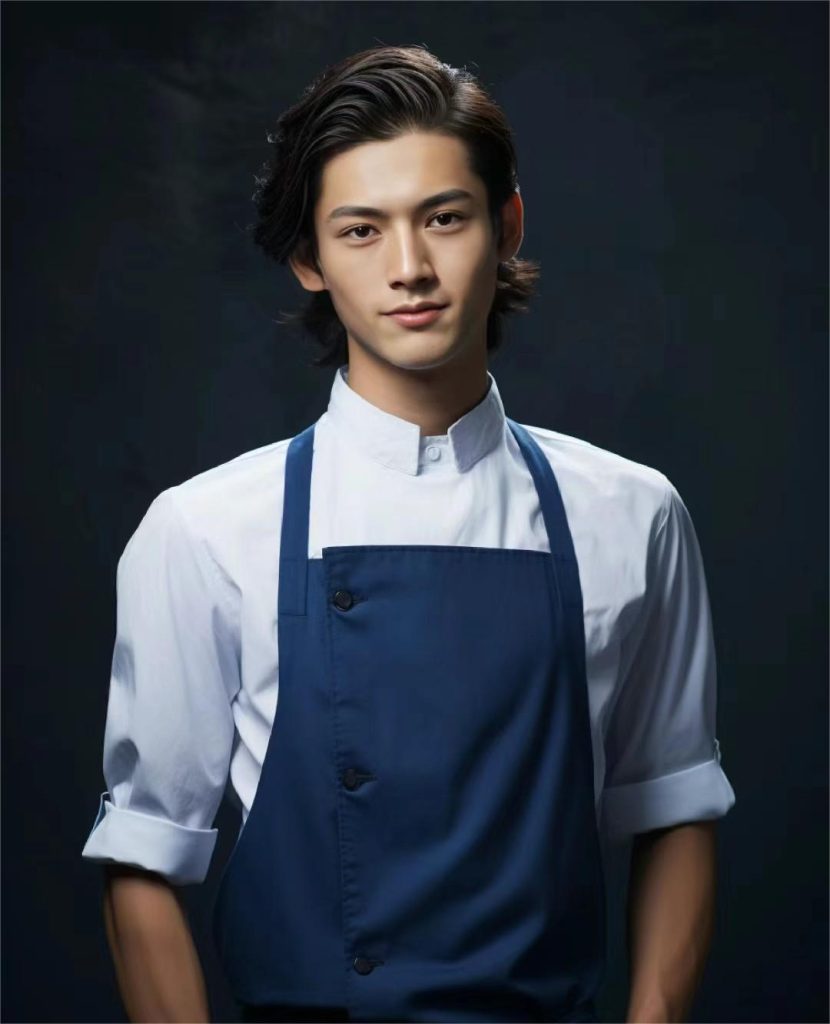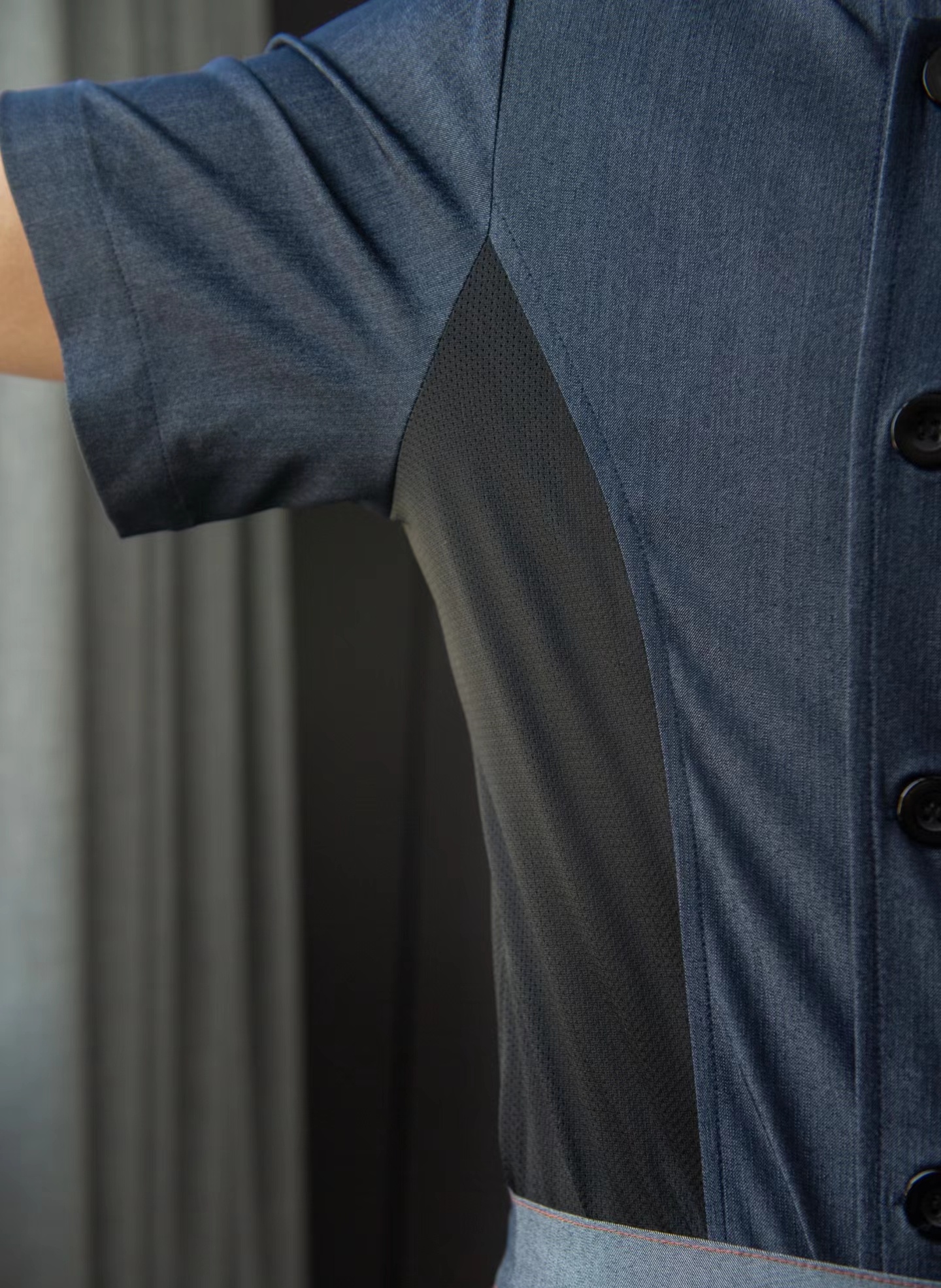I. Pure Cotton Fabric
Pure cotton fabric, made from natural cotton, has always been a classic choice for making chef uniforms.
1. Advantages
- Breathable and Moisture-Absorbent: The molecular structure of pure cotton fibers contains many natural pores, providing excellent breathability and moisture absorption. In the high-temperature, high-intensity kitchen environment, it can quickly absorb sweat from the chef’s body, keeping the skin dry and reducing stuffiness.
- Soft and Skin-Friendly: Pure cotton fabric is soft in texture, gentle and non-irritating when in contact with the skin, and does not easily cause skin allergies or discomfort, providing a comfortable wearing experience for chefs.
- Environmentally Friendly and Healthy: Cotton is a natural renewable resource, and pure cotton fabric is relatively environmentally friendly during production, free of harmful chemicals, and friendly to both human health and the environment.
2. Disadvantages
- Easily Wrinkles and Deforms: Cotton fibers easily wrinkle and deform when exposed to water or pressure, making chef uniforms appear wrinkled and less tidy after washing and wearing, affecting their neat appearance and professional image.
- Slow Drying After Absorbing Moisture: Although pure cotton fabric can quickly absorb sweat, the moisture evaporates slowly. In a busy kitchen, wearing a sweat-soaked uniform that hasn’t dried can increase discomfort and burden.
- Poor Abrasion Resistance: Frequent activities and friction in the kitchen can cause pure cotton chef uniforms to wear out, tear, and develop holes, shortening the garment’s lifespan.
3. Suitable Scenarios
Generally suitable for kitchen environments with moderate work intensity, high comfort requirements, and regular uniform replacement plans, such as western restaurants and baking studios.
II. Polyester-Cotton Fabric
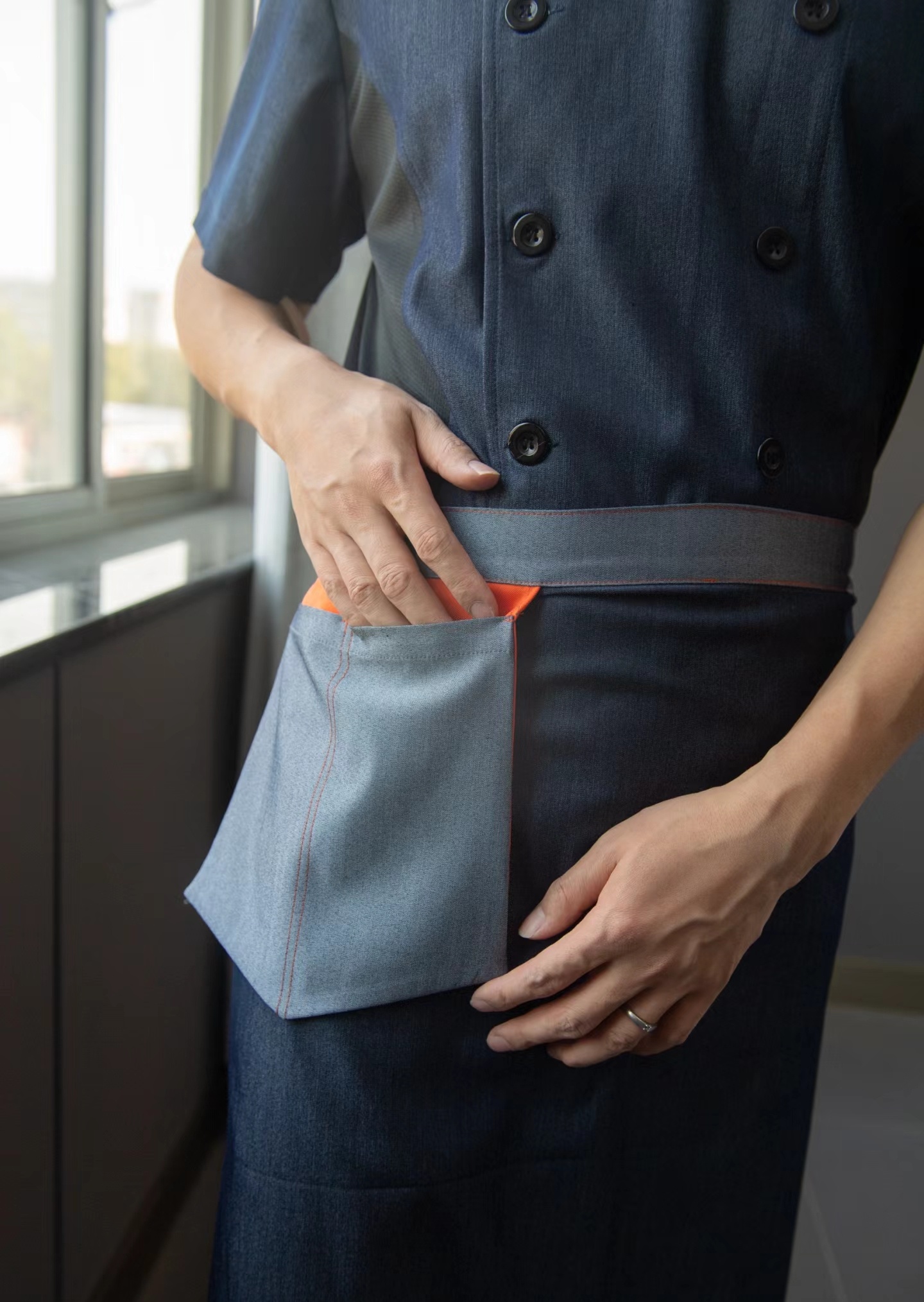
Polyester-cotton fabric is a blend of polyester and cotton fibers in certain proportions and is also widely used in chef uniforms.
1. Advantages
- Wrinkle-Resistant and Shape-Retaining: The addition of polyester fibers significantly improves the fabric’s wrinkle resistance, allowing chef uniforms to remain smooth and crisp after washing, without frequent ironing, saving time and effort.
- Durable and Abrasion-Resistant: The high strength and abrasion resistance of polyester greatly extend the fabric’s lifespan, allowing it to withstand frequent friction and pulling in the kitchen without easily getting damaged.
- Quick-Drying: Compared to pure cotton fabric, polyester-cotton fabric dries faster after absorbing moisture, keeping the body dry and improving the chef’s work efficiency.
2. Disadvantages
- Slightly Inferior Breathability and Moisture Absorption: Due to the higher proportion of polyester fibers, the breathability and moisture absorption of polyester-cotton fabric are not as good as pure cotton fabric, which may cause stuffiness in hot or high-intensity work environments.
- Static Electricity Issues: In dry environments, polyester-cotton fabric is prone to static electricity, attracting dust and impurities, affecting the cleanliness of the uniform and possibly interfering with the chef’s work.
3. Suitable Scenarios
Suitable for kitchen environments with high work intensity and high requirements for garment neatness and durability, such as stir-fry kitchens in Chinese restaurants and cooking areas in collective canteens.
III. Linen Fabric
Linen fabric, made from fibers such as flax and ramie, is a unique fabric used for chef uniforms.
1. Advantages
- Breathable and Cooling: Linen fibers have larger pores, providing excellent breathability and quickly dissipating heat and sweat, keeping chefs cool and comfortable in hot kitchen environments.
- Moisture-Absorbent and Sweat-Wicking: Linen fabric has good moisture absorption and sweat-wicking properties, quickly absorbing sweat and evaporating it into the air, keeping the skin dry.
- Antibacterial and Odor-Resistant: Linen fibers contain a natural antibacterial substance that inhibits the growth of bacteria and fungi, effectively preventing odors and maintaining the cleanliness and hygiene of chef uniforms.
2. Disadvantages
- Rough Texture: Compared to pure cotton and polyester-cotton fabrics, linen fabric has a rougher texture, which may cause some friction on the skin and require time to adapt to.
- Shrinkage Issues: Linen fabric tends to shrink during washing, resulting in poor dimensional stability, so special attention is needed during purchase and washing.
- Higher Cost: Due to the relatively low yield of linen fibers and the complex processing technology, linen fabric is generally more expensive, increasing the cost of making chef uniforms.
3. Suitable Scenarios
Suitable for high-end kitchen environments with high requirements for breathability and moisture absorption and sufficient budgets, such as executive chef kitchens in five-star hotels and high-end private dining restaurants.
IV. Synthetic Fiber Fabric
Synthetic fiber fabric is made from chemical fibers such as polyester and nylon and is also used in making chef uniforms.
1. Advantages
- Waterproof and Oil-Resistant: After special treatment, synthetic fiber fabric has good waterproof and oil-resistant properties, effectively blocking kitchen oil and water from penetrating and keeping the chef uniform clean.
- Durable and Stain-Resistant: Synthetic fiber fabric has high strength and good abrasion resistance and is not easily stained. Even if it gets stained with oil, it is easy to clean, reducing the cleaning difficulty of chef uniforms.
- Bright Colors: Synthetic fiber fabric has high color fastness, does not fade easily, and can maintain bright colors and clear patterns, providing a good appearance for chef uniforms.
2. Disadvantages
- Poor Breathability: Synthetic fiber fabric has poor breathability, causing stuffiness when worn, and hindering sweat evaporation, potentially affecting health when worn for long periods.
- Static Electricity Issues: Synthetic fiber fabric easily generates static electricity, attracting dust and impurities in dry environments, affecting the cleanliness of the uniform and possibly interfering with electronic devices.
- Low Comfort: Synthetic fiber fabric has less softness and skin-friendliness, possibly causing discomfort, especially when worn for long periods.
3. Suitable Scenarios
Suitable for kitchen environments with high requirements for waterproof and oil-resistant properties and harsh working conditions, such as the frying area in fast-food restaurants and the grill area in barbecue restaurants.
V. New Functional Fabrics
With continuous technological advancements, some new functional fabrics are gradually being used in making chef uniforms, offering more options for chefs.
1. Fire-Resistant Fabric
Fire-resistant fabric is specially treated to provide good fire resistance, quickly carbonizing when exposed to flames or high temperatures to form an insulating layer, protecting the body from flames and high heat.
Suitable Scenarios
Suitable for kitchen environments frequently exposed to open flames or high-temperature equipment, such as the oven area in baking schools and the stove area in Chinese restaurants.
Example: In a professional baking training school’s oven area, teachers and students wear fire-resistant chef uniforms for baking instruction and practice. During one baking session, a mishap caused a fire in the oven. Fortunately, the fire-resistant chef uniforms effectively prevented the spread of flames, protecting their bodies from severe burns.
2. Antibacterial and Antiviral Fabric
Antibacterial and antiviral fabric contains antibacterial agents or adopts a special fiber structure to effectively inhibit the growth and reproduction of bacteria, viruses, and fungi, preventing cross-infection.
Suitable Scenarios
Suitable for kitchen environments with extremely high hygiene requirements, such as hospital cafeterias and kindergarten cafeterias.
3. Radiation-Resistant Fabric
Radiation-resistant fabric uses metal fibers or special coatings to effectively block electromagnetic radiation, protecting the body from electromagnetic wave harm.
Suitable Scenarios
Suitable for kitchens with numerous electronic devices and strong electromagnetic radiation, such as modern smart kitchens.
VI. How to Choose the Right Chef Uniform Fabric
When choosing chef uniform fabric, consider factors such as work environment, work intensity, personal needs, and budget.
1. Work Environment
If your kitchen is hot and humid, choose breathable and moisture-absorbent fabrics like pure cotton and linen; if the kitchen frequently encounters oil and water splashes, choose waterproof and oil-resistant fabrics like synthetic fiber or treated fabrics; if you frequently deal with open flames or high-temperature equipment, choose fire-resistant fabric.
2. Work Intensity
If your work is highly intensive with frequent activities, choose durable and wrinkle-resistant fabrics like polyester-cotton; if your work is relatively easy with high comfort and appearance requirements, choose pure cotton or linen fabric.
3. Personal Needs
If you prioritize comfort and environmental performance, choose pure cotton or linen fabric; if you prefer easy maintenance and long lifespan, choose polyester-cotton or synthetic fiber fabric; if you have high hygiene and health requirements, choose antibacterial and antiviral fabric.
4. Budget
Different fabrics vary significantly in price. Pure cotton and linen fabrics are relatively expensive, while polyester-cotton and synthetic fiber fabrics are relatively cheaper. Choose fabrics reasonably according to your budget.
Conclusion
In summary, choosing the right chef uniform fabric requires considering multiple factors comprehensively. Only by selecting the right fabric can chef uniforms perform optimally at work, ensuring safety and comfort in your culinary career.

 100% COTTON FABRIC
100% COTTON FABRIC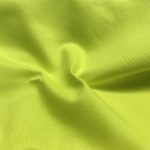 COTTON STRETCH FABRIC
COTTON STRETCH FABRIC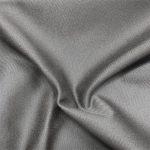 POLYESTER/COTTON FABRIC
POLYESTER/COTTON FABRIC OTHERS FABRIC
OTHERS FABRIC